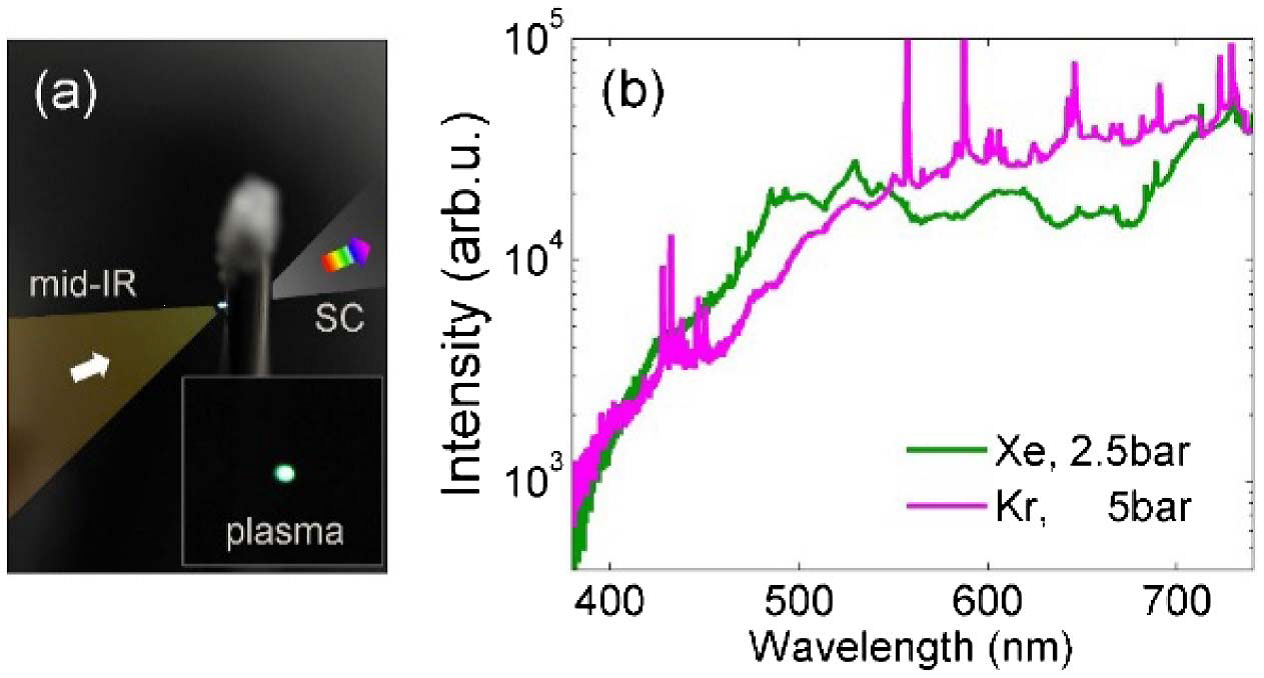Development of ultrashort mid-IR pulses is under intensive study as it provides a powerful tool of revealing new phenomena of nonlinear light-matter interactions.
Mid-IR pulses have been applied on the high harmonics generation (HHG) in bulk materials that enclose both intraband and interband mechanisms. Also their applications involve driving and controlling of electron recollision dynamics and coherent control of lattice displacement for magnetism manipulation.
Generation of intense mid-IR pulses relies mainly on the frequency downconversion through an optical parametric amplifier (OPA) or difference frequency generation (DFG). In previous studies, intense mid-IR pulses at 7μm were produced using all-fiber pumped optical parametric chirped pulse amplification (OPCPA), which may support the intensity of 700 TW∕cm2. For a longer wavelength, the achievable pulse energy is restricted by the pump energy and the available nonlinear materials. However, for gaseous atoms and molecules, the plasma formation and supercontinuum generation by such long-wavelength pulses are still beyond reachable.
Recently, researchers in Shanghai Institute of Optics and Fine Mechanics (SIOM) of the Chinese Academy of Sciences have produced extremely bright mid-infrared (mid-IR) pulses with a tunable wavelength of 7 μm to 15 μm by means of difference frequency generation. Through the manipulation of phase front for the OPA and DFG stages, the mid-IR pulses are optimized to compress the aberrations and achieve the peak fields up to 280 MV/cm, intensities over the 100 TW∕cm2 level. This is the highest field intensity at this wavelength range, to the best of our knowledge.
Their findings, entitled “Intense broadband mid-infrared pulses of 280 MV/cm for supercontinuum generation in gaseous medium”, were published in Optics Letters on February 15, 2018.
This work was supported by National Natural Science Foundation of China (NSFC) and the Strategic Priority Research Program of Chinese Academy of Sciences (CAS).
Related website---https://doi.org/10.1364/OL.43.000667


Fig. (a) Illustration of the experimental setup of supercontinuum generation; inset shows the bright spot of ionized Xe gases. SC: supercontinuum.
(b) Supercontinuum generated in Xe and Kr gases, shown in log scale.
(Image by Bai Ya)
Author Contact:
Bai Ya, Ph.D. and Associate Professor
State Key Laboratory of High Field Laser Physics, Shanghai Institute of Optics and Fine Mechanics, Chinese Academy of Sciences
390 Qinghe Road, Jiading District, Shanghai, China
Tel: +86 21 69918000
Email: pipbear@siom.ac.cn







